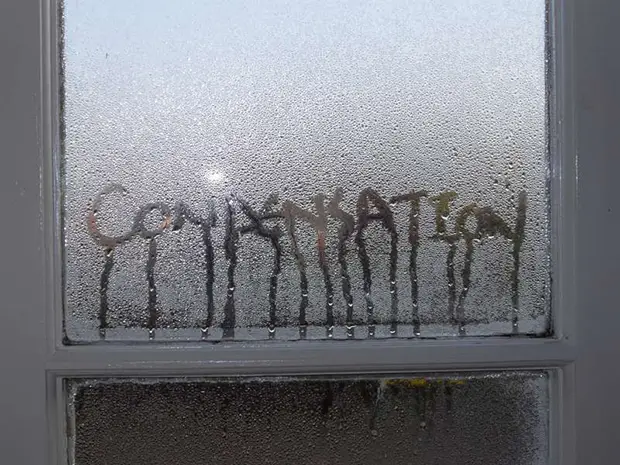 Q: This winter I’ve been noticing condensation on my windows. Is this a problem? What’s happening?
Q: This winter I’ve been noticing condensation on my windows. Is this a problem? What’s happening?
A: If you have condensation on your windows you’re most likely wondering how it got there and if it’s going to cause a problem. Condensation is a natural process that occurs when warm, moist air comes in contact with a cooler surface. You likely notice this often on your bathroom mirror after a shower, on cold glasses, or even on home windows. Usually, condensation can be wiped away; however, if it can’t, you likely have a more serious window problem.
Here is everything that you need to know about window condensation and how it may impact the performance of your window:
Interior vs. Exterior Condensation
One of the biggest things to watch for with condensation on windows is its location—inside or outside the glass. Although it may look concerning, exterior condensation during warmer months is normal for energy-efficient windows. You’ll see this when the window’s outside surface is cooler than the dew point of the outdoor air. The dew point is the temperature when air becomes fully saturated with moisture. Interior condensation happens when too much indoor humidity causes warm air to condense on cold window surfaces. This often occurs in winter when indoor air meets cold windows. Interior condensation is not always a problem, but frequent moisture buildup can be damaging. Older windows especially may develop rot, mold, or frame damage if condensation happens too often.
What If Condensation Is Between Window Panes?
If you find condensation between two panes of glass, you’re most likely dealing with a seal failure. In some cases, condensation occurs because the desiccant in the window’s spacer system becomes saturated, thereby failing to reduce interior moisture. Unfortunately in either of these scenarios, the window will most likely need to be replaced. This is really the only way to restore the maximum thermal performance of the window. Alternatively, some companies drill holes in the outer pane, clean the interior, and add vents—though this method isn’t recommended. The initial cost is higher, the energy-efficient benefits and lifetime warranty of new windows outweigh the small short-term savings.
Will New Windows Solve My Problem?
When you choose energy efficient replacement windows with weather tight seals, you might actually notice slightly more condensation on your new windows than your old windows. Most likely, this happened because your old windows were drafty, and consequently, they allowed indoor air to escape the home. New energy efficient windows will work to eliminate air flow and thus be more efficient at keeping moist air in the home. Although it may seem concerning, remember that morning condensation is usually temporary and tends to disappear shortly after sunrise. If you’re finding condensation over a long period of time, you may want to consider ways to reduce humidity in the air:
- Open or crack a window to promote air circulation
- Run exhaust fans in kitchen or bathroom to reduce humidity
- Turn off humidifiers
- Use a dehumidifier
- Move plants if condensation is occurring on windows near them
- Don’t store large amounts of firewood in your home
How Do I Know If My Windows Are Condensation Resistant?
Modern windows have metrics that indicate condensation resistance. The measurement ranges from 1 to 100; thus, a higher number means the window is more resistant to condensation buildup. Since window edges are typically colder than the center, the spacer type between panes plays a key role in overall insulation performance. Thus it’s important to look for a window with warm-edge spacers.
The reality is that over time, old windows lose their efficiency. As a result, this can cause condensation problems that lead to additional home issues like frost, ice, mold, and mildew. If you’re concerned about your current window’s performance, contact Stephanie Vanderbilt today at svanderbilt@mycoastalwindows.com or by calling 978-304-0495. You also may benefit from the tips included in our free Winter Ready Home Guide.




